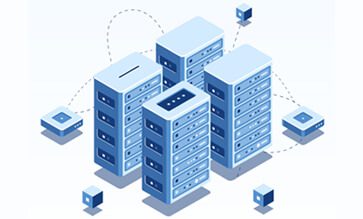Google and other leading thinkers have proclaimed the data age as the fourth Industrial Revolution. To fully adopt the technologies that will enable businesses to thrive in this new era, organizations must modernize their legacy data warehouses and create dynamic Business Intelligence (BI) dashboards. This means you can no longer rely on static reports or spreadsheets to access your data—you need something fast and agile. If you’re looking to integrate your data warehouse with new services, such as artificial intelligence, chatbots, and virtual assistants, while also meeting compliance requirements, read on to discover how you can create dynamic BI dashboards using five simple steps.
Table of Contents
Step 1: Define your end goals
What are your business goals? Are you trying to drive more sales? Increase customer retention? Or improve employee productivity? Before you even start to imagine what your visualizations will look like, you have to know what end goal your data is going to serve. Defining your goals is the best way to determine what metrics you should track and which KPIs you should use to measure your business’s performance. If you’re not sure where to start, try conducting some market research to see what other companies are measuring and how they’re measuring it.
Step 2: Audit your current data warehouse
Once you’ve decided what your end goals are, it’s time to take a look at what’s currently in your data warehouse. Conducting an audit will give you a complete picture of your current data landscape, allowing you to identify what’s working and what could use a tune-up. There are a few different ways to audit your warehouse, including: using manual spreadsheets, performing a data discovery, taking advantage of your data warehouse management (DW) tool, or using a third-party data assessment tool. Whether you choose to do it manually or use an automated tool, an audit will help you understand your data’s current state so you can identify any red flags or issues that need to be addressed.
Step 3: Decide on a modern analytics platform
Now that you’ve taken stock of your data and determined what your end goals are, you can start to consider what analytics platform will best meet your needs. This is where you decide if you want to stay on-premise or go with a hybrid or cloud solution. You also need to determine if you want an operational data warehousing (ODW) or a decision support system (DSS). Did you know that most organizations are still running on operational data warehousing (ODW) systems, which were developed in the 1960s? If you’re one of those organizations, you are probably experiencing the same challenges that businesses were facing back then, such as a lack of scalability and agility.
Step 4: Import your data and update your metadata
Once you’ve determined which analytics platform is best for your organization, you can start to import your data. The first step is to update your metadata so that your data is correctly tagged. This will enable you to search, organize, and filter your data more effectively, which will help you create dynamic BI dashboards in the long run. Once your data is imported, you’ll want to make sure it is up-to-date. To do this, you can either manually enter the data or you can use an enterprise data modeling tool to automate the process.
Step 5: Leverage insights
Now that you’ve completed the first four steps, you can finally create those dynamic BI dashboards you’ve been dreaming about. To do this, you can use a business intelligence software solution with a change data capture functionality that allows you to easily create charts and graphs, as well as create alerts and notifications. Additionally, you can also use a data visualization tool to create stunning visualizations that are easily shareable across your organization. Once your data is visualized, you can use it to make informed decisions and find new insights, while also identifying areas of opportunity that you can act on.

